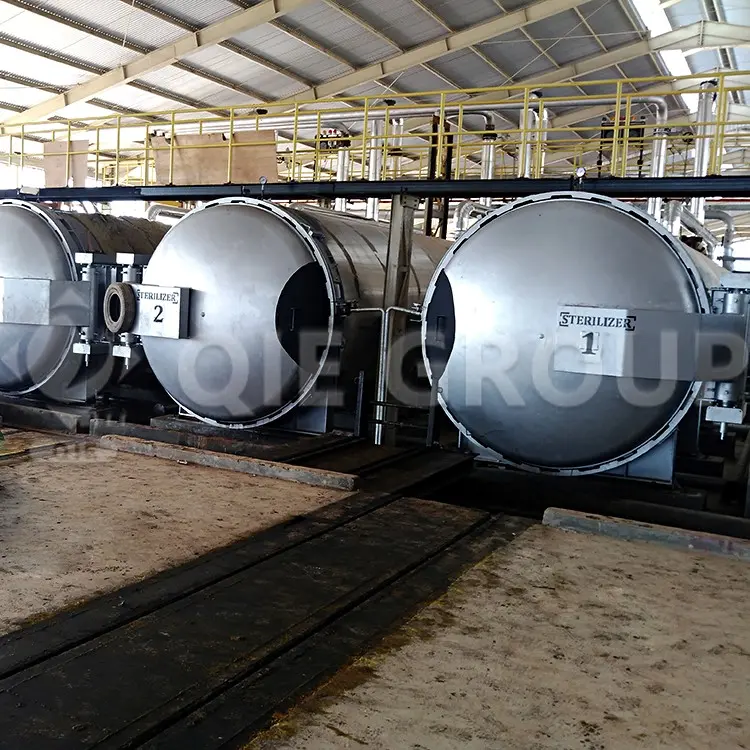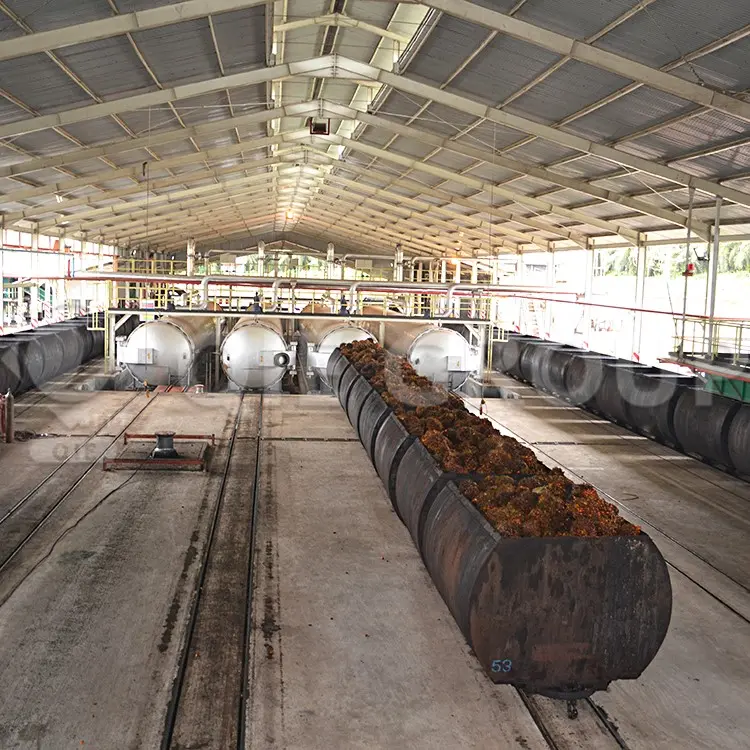In a palm oil processing plant, the palm fruit sterilizer is one of the most critical pre-treatment machines. It’s not just “heating the fruit bunches”; it is the starting point of the palm oil pretreatment process, directly affecting oil yield, oil quality, and overall production efficiency.

Fresh fruit bunches (FFB) contain abundant lipase enzymes and microorganisms. Without timely sterilization, free fatty acid (FFA) levels rise quickly, causing rapid oil deterioration. The sterilizer uses high-temperature and high-pressure steam to achieve:
Enzyme inactivation to prevent rancidity: Maintaining 95–100°C saturated steam for a certain time effectively inactivates lipase, keeping FFA levels low and meeting international standards.
Softening the fruit to improve oil extraction: Steam softens the fruit cell walls, making the fruit easier to detach from the stalk, reducing residual oil losses in subsequent pressing.
Ensuring hygiene and safety: High temperatures kill bacteria and mold, reducing contamination risks during later processing.
Assisting fruit detachment: Sterilized fruit bunches are easier to separate from the stalk, improving detachment efficiency.
International standards (e.g., RSPO, ISO 22000) impose strict requirements on palm oil acidity. The sterilizer is crucial for controlling FFA levels and ensuring export-quality oil.
Prevent oil loss and maximize overall yield;
Reduce energy consumption in subsequent pressing and refining;
Improve FFB processing efficiency and reduce labor costs.
The sterilization stage works closely with the thresher, digester, and screw oil press. Without proper sterilization:
Hard fruit can block the press;
High acidity increases refining costs;
Acidic substances accelerate equipment corrosion.

Reduced oil yield and higher residual oil in the press cake;
High FFA levels, failing food-grade or export standards;
Increased equipment maintenance costs and lower long-term efficiency.
The sterilizer is the core of the palm oil sterilization process, not just a tank. Its performance determines oil quality, yield, and production line efficiency. With growing global demand for high-quality palm oil, modern mills almost always include an efficient sterilization system as standard.
👉 In the entire palm oil production line, the sterilizer serves as the first critical step, directly affecting downstream detachment, pressing, and refining processes.
Traditional sterilizers often face high energy consumption and incomplete enzyme inactivation. QIE Group optimizes steam distribution and automation control to achieve:
Higher steam utilization and lower running costs;
Thorough enzyme inactivation for stable oil quality;
Automated control for efficiency and minimal manual intervention.
Q1: Should a palm fruit sterilizer be batch or continuous type?
A: Small mills often use batch sterilizers for lower investment, while large mills favor continuous systems for higher efficiency.
Q2: Does sterilization consume a lot of energy?
A: Traditional systems consume more energy, but QIE’s optimized steam distribution and automation can reduce energy usage by 20–30%.
Q3: Can sterilization be skipped?
A: Not recommended. Skipping sterilization increases FFA, lowers oil yield, and raises refining costs.
👉 If you plan to build an efficient palm oil mill plant, contact QIE Group for a customized palm fruit sterilizer solution and complete processing equipment support, including installation, commissioning, training, and long-term technical service.











